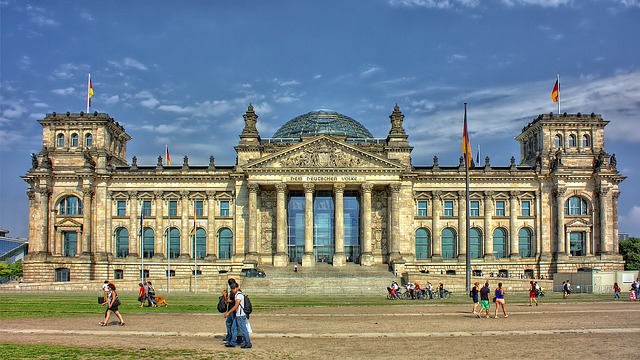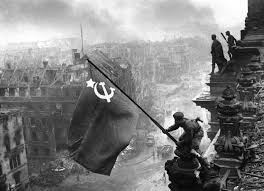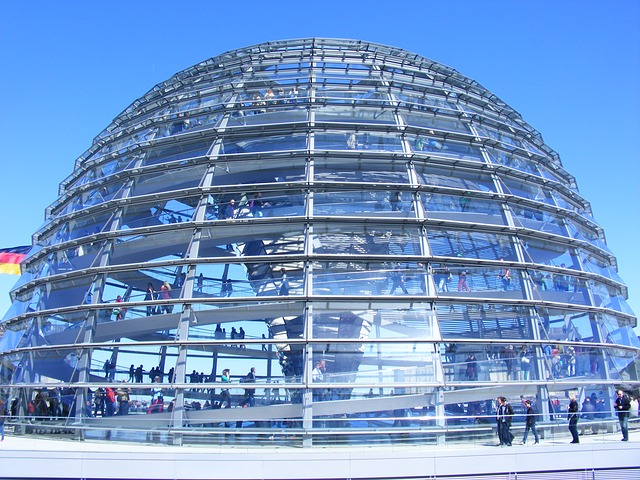Reichstag building
Contents |
[edit] Introduction
The Reichstag building is one of the most important historic buildings in Berlin, Germany, and one of its most popular tourist attractions. It serves as the meeting place of the German parliament, the Bundestag.
Construction of the original building was completed in 1894 and housed the Imperial Diet until 1933. In 1933, the building was set on fire in what was reported to be an arson attack by a Dutch communist, although many believe that it was orchestrated by the Nazis as a ‘false flag operation’, to enable Adolf Hitler to step up his state security operations and crack down on civil liberties.
During the Second World War, the Reichstag was badly damaged and it then fell into disuse. A partial refurbishment took place in the 1960s, but it was only after German reunification in 1990 that a full-scale reconstruction was proposed and eventually got underway, led by the British architect Norman Foster. It was completed in 1999, when it resumed its role as the meeting place of the Bundestag.
[edit] Design and construction
Prior to the 1871 unification of Germany, parliament had assembled in various smaller buildings around Berlin. An architectural competition for a single building was held in 1872. The site that was chosen was already occupied by the Raczynski Palace, owned by a Polish-Prussian aristocrat, who refused to sell his land. It wasn’t until 10 years later that the site was purchased and the palace demolished.
Another design competition was held in 1882, and was won by the architect Paul Wallot, who proposed a Neo-Baroque building adorned with decorative sculptures, reliefs, and inscriptions by the sculptor Otto Lessing. Construction took place between 1892 and 1894, and included a cupola of steel and glass that was heralded as a major engineering accomplishment, while the building as a whole drew criticism for its mixture of architectural styles.
[edit] Post-WWII
The building was badly damaged by the fire of 1933 and subsequent bombing attacks during the Second World War. It became one of the central targets for the Russian Red Army during the Battle of Berlin in 1945. One of history’s most famous photographs ‘Raising a flag over the Reichstag’ was taken on the building’s roof on 2nd May 1945, symbolising the Russian victory over Germany.
After the war there were calls to demolish the building, and indeed the cupola was; however, a decision was made to try and restore the rest of the building. Paul Baumgarten won a design competition with plans involving the retention of only the outer walls, with a plain building inside that was stripped of all heraldic statues, monuments, and decorations that were representative of German mythology.
Reconstruction took place between 1961 and 1964.
[edit] Norman Foster reconstruction
After the reunification of Germany in 1990, a decision was made to undertake a drastic reconstruction of the building. In 1992, an architectural competition was won by Norman Foster with a design comprising a steel-and-glass canopy that would have covered the original structure ‘like an enormous table’. However, as budget realities began to set in, Foster was forced to reduce the scale and ambition of his design, reverting instead to a large glass dome.
Before reconstruction work began, in 1995, the Reichstag was ‘wrapped’ by the artist Christo as an art piece that attracted millions of visitors.
The building was completely gutted, with everything being removed, including all of Baumgarten’s changes, other than the outer walls which were left intact. Traces of graffiti left by Soviet soldiers in 1945 were carefully retained. Foster’s design consolidated the functional spaces of the parliament back into a single building.
The clear glass dome includes a helical ramp around its outer edges leading to a public observation deck with a 360-degree view of the city. Skylights at the base of the cupola open into the parliamentary debating chamber directly below, allowing natural light in by way of an inverted cone of mirrored panels. This blocks direct sunlight which would cause solar gain and glare, and enables natural ventilation, exhausting hot air through the top of the cupola.
The reconstruction project was completed in 1999, with the Bundestag convening there for the first time in April of that year.
[edit] Find out more
[edit] Related articles on Designing Buildings Wiki
Featured articles and news
Delivering for tenants; National Retrofit Hub
New report offers recommendations to strengthen energy efficiency standards to protect private renters.
Government consultations for the summer of 2025
A year of Labour, past and present consultations on the environment, the built environment, training and tax.
CMA competitiveness probe of major housing developers
100 million affordable housing contributions committed with further consultation published.
Homes England supports Greencore Homes
42 new build affordable sustainable homes in Oxfordshire.
Zero carbon social housing: unlocking brownfield potential
Seven ZEDpod strategies for brownfield housing success.
CIOB report; a blueprint for SDGs and the built environment
Pairing the Sustainable Development Goals with projects.
Types, tests, standards and fires relating to external cladding
Brief descriptions with an extensive list of fires for review.
Latest Build UK Building Safety Regime explainer published
Key elements in one short, now updated document.
UKGBC launch the UK Climate Resilience Roadmap
First guidance of its kind on direct climate impacts for the built environment and how it can adapt.
CLC Health, Safety and Wellbeing Strategy 2025
Launched by the Minister for Industry to look at fatalities on site, improving mental health and other issues.
One of the most impressive Victorian architects. Book review.
Common Assessment Standard now with building safety
New CAS update now includes mandatory building safety questions.
RTPI leader to become new CIOB Chief Executive Officer
Dr Victoria Hills MRTPI, FICE to take over after Caroline Gumble’s departure.
Social and affordable housing, a long term plan for delivery
The “Delivering a Decade of Renewal for Social and Affordable Housing” strategy sets out future path.
A change to adoptive architecture
Effects of global weather warming on architectural detailing, material choice and human interaction.
The proposed publicly owned and backed subsidiary of Homes England, to facilitate new homes.
How big is the problem and what can we do to mitigate the effects?
Overheating guidance and tools for building designers
A number of cool guides to help with the heat.
The UK's Modern Industrial Strategy: A 10 year plan
Previous consultation criticism, current key elements and general support with some persisting reservations.
Building Safety Regulator reforms
New roles, new staff and a new fast track service pave the way for a single construction regulator.




























